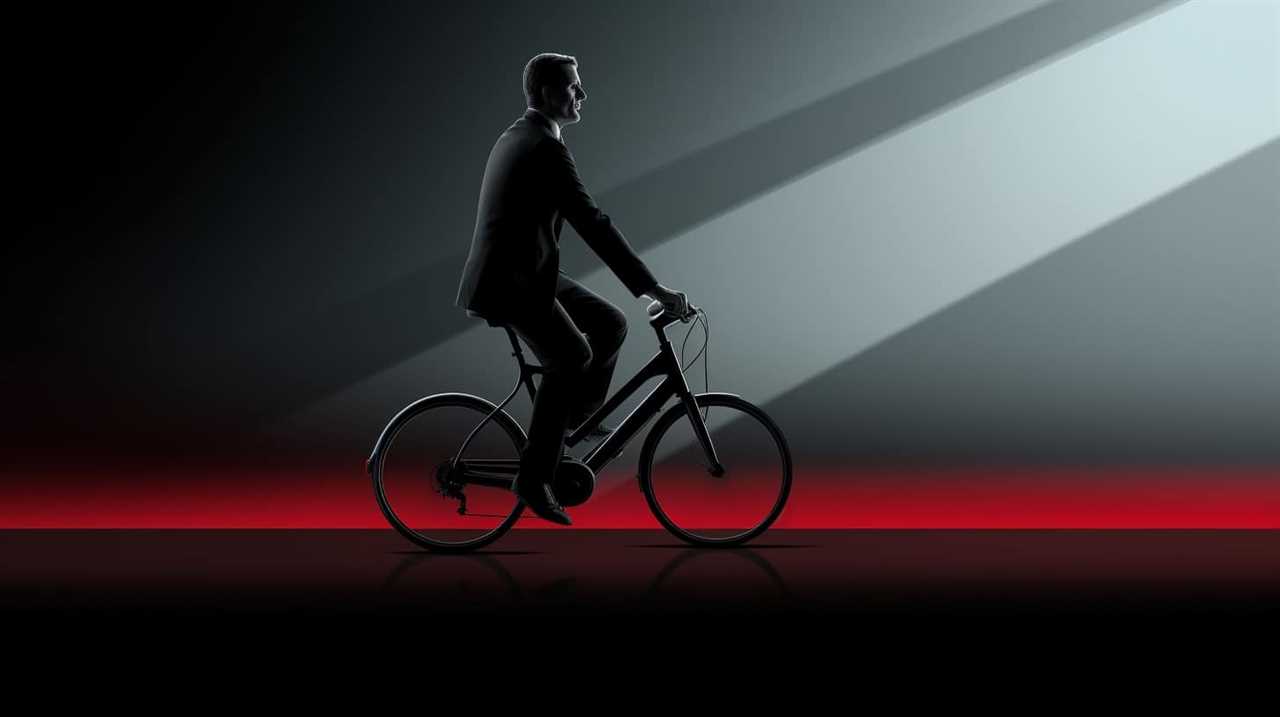To fuel your cycling performance, focus on your nutrition before, during, and after rides. Eat a balanced meal 2-3 hours prior, rich in carbs—think bananas or whole grain toast with dates. During your ride, aim for 30-60 grams of carbs per hour, using energy gels or bananas for quick boosts. Stay hydrated by sipping water or electrolyte drinks every 15 minutes. After your ride, replenish with 0.8 grams of carbs and 0.3 grams of protein per kg of body weight within an hour. Understanding these tips will enhance your cycling experience and optimize your performance on the road.
Key Takeaways
- Consume a balanced meal 2-3 hours before riding, focusing on 60 grams of carbohydrates for optimal energy.
- During rides, intake 30-60 grams of carbs per hour, utilizing energy gels or bananas for quick refueling.
- Hydrate adequately by sipping 6-12 ounces of fluid every 15 minutes during rides to maintain performance.
- Post-ride, eat 0.8 grams of carbohydrates and 0.3 grams of protein per kg of body weight within 20-60 minutes for recovery.
- Avoid high-fiber and fatty foods within 2-4 hours before cycling to prevent gastrointestinal discomfort.
Cycling Nutrition Basics
When you hit the road, understanding cycling nutrition basics is essential for enhancing your performance. Carbohydrates are your primary energy source, so it's important to know how much you need. Elite cyclists typically require 8-11 grams of carbs per kilogram of body weight, while recreational cyclists should aim for 5-8 grams.
Proper meal timing can make a significant difference. Recent discussions about the significance of nutrition in athletic performance have highlighted the importance of tailored dietary strategies. Ideally, consume a balanced meal 2-3 hours before riding to fuel your energy levels effectively.
During long rides, refueling is necessary. You should intake 30-60 grams of carbs per hour to maintain energy. High-GI snacks like bananas can provide quick boosts when you need them, while low-GI options like oatmeal or whole grain bread offer sustained energy.
Hydration is also key; start drinking water 24 hours before your ride. Aim for 16-24 ounces in the two hours leading up to your cycling session to promote ideal hydration levels.
Pre-Ride Meal Recommendations

To maximize your performance on the bike, focus on a well-timed pre-ride meal. Ideally, you should eat this meal 2-3 hours before hitting the road. For rides lasting over 60 minutes, aim for around 60 grams of carbohydrate intake. Foods like 3 medjool dates or a banana on whole grain toast are excellent choices. These low-GI carbohydrates provide sustained energy levels, keeping you fueled as you pedal.
Additionally, consider incorporating easy keto breakfast ideas that can offer you a high-energy start to your day.
If you're short on time, small snacks 30-60 minutes prior can also do the trick. For quick energy, consider high-GI snacks like a piece of fruit or a sports gel. Just remember to keep your pre-ride meal or snacks easily digestible to avoid discomfort during your ride.
Avoid high-fiber, fatty, or spicy foods within 2-4 hours before cycling, as they can slow you down and disrupt your performance. Instead, choose digestible options like oatmeal or whole grain bread with peanut butter.
Following these nutrition tips will help guarantee you're crossing paths with success on your cycling adventures!
Fueling During Rides
When you're out on a ride longer than 60 minutes, fueling your body with the right carbohydrates is essential for maintaining your energy levels.
Including nutrient-dense options like chia seed energy bars can provide sustained energy due to their high fiber and omega-3 content. You need to aim for 30-60 grams of carbs each hour, and don't forget to stay hydrated; it directly affects how well your body absorbs that fuel.
Whether you prefer energy gels or solid snacks like bananas, choosing the right options can make all the difference in your performance.
Carb Intake Guidelines
Fueling your rides effectively is essential for maintaining energy and performance on the bike. To optimize your carbohydrate intake, follow these guidelines based on the duration and intensity of your rides. Additionally, consider the environmental impact of your energy sources, as some options may contribute to pollution and resource depletion, similar to the impact of wood-burning.
- For rides lasting 1 to 1.5 hours, aim to consume 20-30 grams of carbohydrates per hour (80-120 calories) to maintain energy levels.
- For longer rides over 3 hours, increase your carbohydrate intake to 60-90 grams per hour (180-360 calories) to adequately fuel your performance.
- Incorporate quick energy sources like energy gels, energy chews, and bananas, consuming them every 45-50 minutes for effective refueling.
- Adjust your carbohydrate intake based on ride intensity and duration, ensuring you consume carbs consistently to prevent energy depletion.
Keep in mind that the average absorption rate for carbohydrates during exercise is about 1 gram per minute.
By planning your mid-ride fueling and incorporating solid foods or gels, you'll enhance your nutrition and hydration strategy, helping your body perform at its best.
Hydration Importance
Proper hydration during your rides is essential for maintaining peak performance and energy levels. Dehydration can notably slow gastric emptying and gut motility, which decreases energy absorption and overall performance.
Understanding financial terms can similarly impact your financial health as it helps in making informed decisions. For rides lasting over an hour, aim to consume 30-60 grams of carbohydrates per hour, in addition to adequate fluid intake.
Your hydration needs can vary based on individual sweat rates, so it's vital to sip on 6-12 ounces of fluid every 15 minutes. Electrolyte drinks are especially beneficial for longer rides, particularly in hot conditions, where a sodium content of 110 mg or more per 8 ounces helps replenish lost minerals.
To effectively manage your hydration, weigh yourself before and after rides. This weight assessment helps you gauge fluid loss, guiding you to drink 16-20 ounces of fluid for every pound lost during exercise.
Staying on top of your hydration not only supports your performance but also enhances your overall cycling experience. Make hydration a priority, and you'll notice the difference it makes in your endurance and energy levels while riding.
Snack Options
Staying hydrated sets the foundation for effective fueling during your rides. Proper nutrition is essential for maintaining energy levels, especially when cycling for over an hour. Aim to consume 30-60 grams of carbohydrates per hour to keep your glycogen stores topped up.
It's important to remember that while enjoying treats like ice cream can be tempting, they often contain high sugar and fat content, which can impact your performance if consumed excessively ice cream and health considerations.
Here are some snack options to take into account during your rides:
- Energy Gels: Quick and easy to digest, these provide a rapid energy boost.
- Rice Cakes: Light on the stomach, they're a great source of carbohydrates.
- Bananas: Packed with potassium, they help with hydration and provide natural sugars.
- Peanut Butter & Jelly Sandwiches: Great for longer rides; they offer a mix of carbs and protein.
Remember to sip on water or electrolyte drinks every 15 minutes to stay hydrated.
Experiment with different snacks during training rides to find what your body tolerates best. Fueling properly helps you rehydrate and maintain energy, allowing you to enjoy your ride without gastrointestinal issues.
Foods to Avoid Before Riding

Before hitting the road, it's crucial to be mindful of what you eat. Certain foods can hinder your performance and lead to gastrointestinal discomfort. To guarantee an enjoyable ride, steer clear of these options:
| Food Type | Effects | Alternatives |
|---|---|---|
| High-Fiber Foods | Hinders energy absorption; causes GI distress | Easily absorbed snacks |
| Heavy Foods | Slows digestion; leads to lethargy | High-GI snacks like bananas |
| Spicy Foods | Can upset your stomach; causes discomfort | Mild snacks |
Additionally, avoid excess caffeine and alcohol, as both can lead to dehydration and GI distress. Instead of heavy meals, focus on easily absorbed, high-GI snacks in the hour before your ride. Foods like bananas or energy bars provide quick energy without the risk of discomfort. By being mindful of these foods, you'll set yourself up for a smoother and more enjoyable cycling experience. Choose wisely, and your body will thank you!
Post-Ride Recovery Nutrition

After an invigorating ride, what you eat can greatly impact your recovery and performance for future rides. Focusing on post-ride recovery nutrition is key to replenishing glycogen stores, repairing muscles, and ensuring you're fueled for your next adventure.
Incorporating foods rich in vitamins and antioxidants can further enhance your recovery process, as they help reduce inflammation and support overall health, similar to the benefits of celery juice and pregnancy.
Here are four essential components to take into account:
- Carbohydrates: Aim for about 0.8 grams of carbohydrates per kg of body weight within 20-60 minutes post-ride. This helps replenish your glycogen stores and serves as an essential energy source.
- Protein: Incorporate approximately 0.3 grams of protein per kg of body weight to support muscle repair. A balance of carbs and protein is critical for effective recovery.
- Meal Timing: Eating soon after your ride greatly enhances glycogen replenishment. Don't delay your intake if you want ideal results.
- Hydration: Rehydrate by drinking 16-20 ounces of fluid for every pound lost during your ride. Proper hydration aids nutrient absorption and boosts overall recovery.
For a tasty option, try Greek yogurt with granola and fruit. This combination provides both carbohydrates and protein for effective post-ride recovery nutrition.
Hydration Strategies for Cyclists

Hydration is essential for cyclists who want to maximize their performance and recovery. Before your ride, aim to consume 16-24 ounces of water within two hours. This helps guarantee your body's fluid levels are ideal.
Additionally, consider incorporating herbal teas like flower teas for added hydration benefits, as they can provide essential nutrients and antioxidants that support overall health. During rides lasting longer than an hour, sip on 6-12 ounces of fluid every 15 minutes. This approach keeps your hydration and energy levels up.
For rides exceeding an hour, don't rely solely on water. Incorporating electrolytes is vital as they replenish lost minerals and maintain performance.
After your ride, focus on rehydration. It's recommended to drink 16-20 ounces of fluid for each pound lost during exercise. This will aid your recovery markedly.
To monitor your hydration status effectively, check your body weight before and after rides. If you lose more than 3% of your weight, it's a clear sign you need to increase your hydration efforts.
Frequently Asked Questions
What to Eat Before and After Cycling?
Before cycling, grab a carb-rich snack like a banana or bar. After your ride, refuel with a meal or shake containing carbs and protein within an hour to help your body recover effectively.
What Should I Eat Before and During a 100 Mile Bike Ride?
Before your 100-mile ride, eat a carb-rich meal like oatmeal with banana and honey. During the ride, consume 60-90 grams of carbohydrates per hour from energy gels or snacks to keep your energy steady.
What Is the Best Food for Cyclists?
There's no magic food that'll make you fly on your bike, but loading up on carbohydrates like oatmeal, bananas, and energy gels will fuel your ride and help you conquer any distance with ease.
What Not to Eat Before Cycling?
Before cycling, don't eat high-fiber, high-fat, or high-protein foods, as they slow digestion and can cause discomfort. Also, avoid spicy foods, excessive caffeine, and alcohol to prevent dehydration and gastrointestinal issues.
Conclusion
In cycling, what you eat can make or break your ride. It's not just about fueling your body; it's about understanding how different foods impact your performance and recovery. By prioritizing nutritious meals and staying hydrated, you'll discover that your energy levels soar and your rides become more enjoyable. Remember, the right nutrition isn't just a theory—it's a proven strategy that elevates your cycling experience and helps you reach your goals faster. So, eat smart and ride strong!









